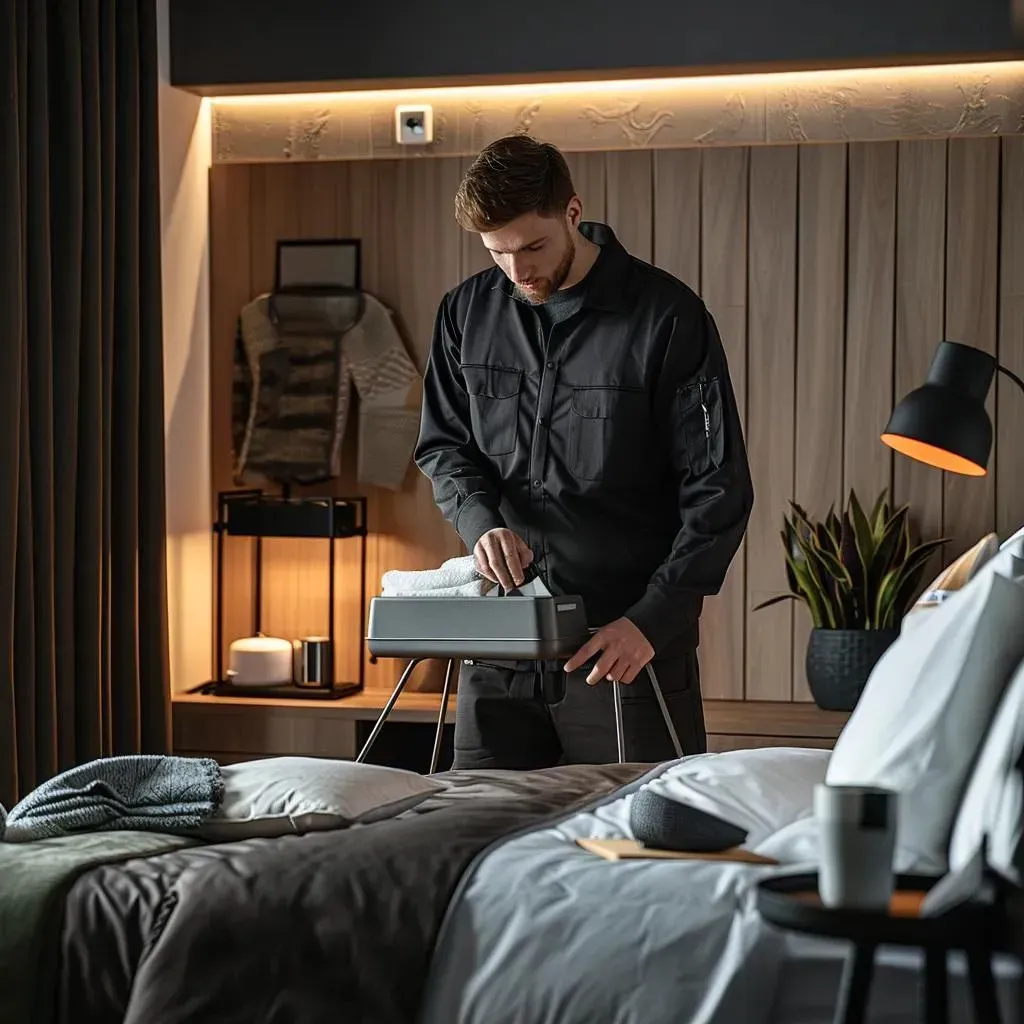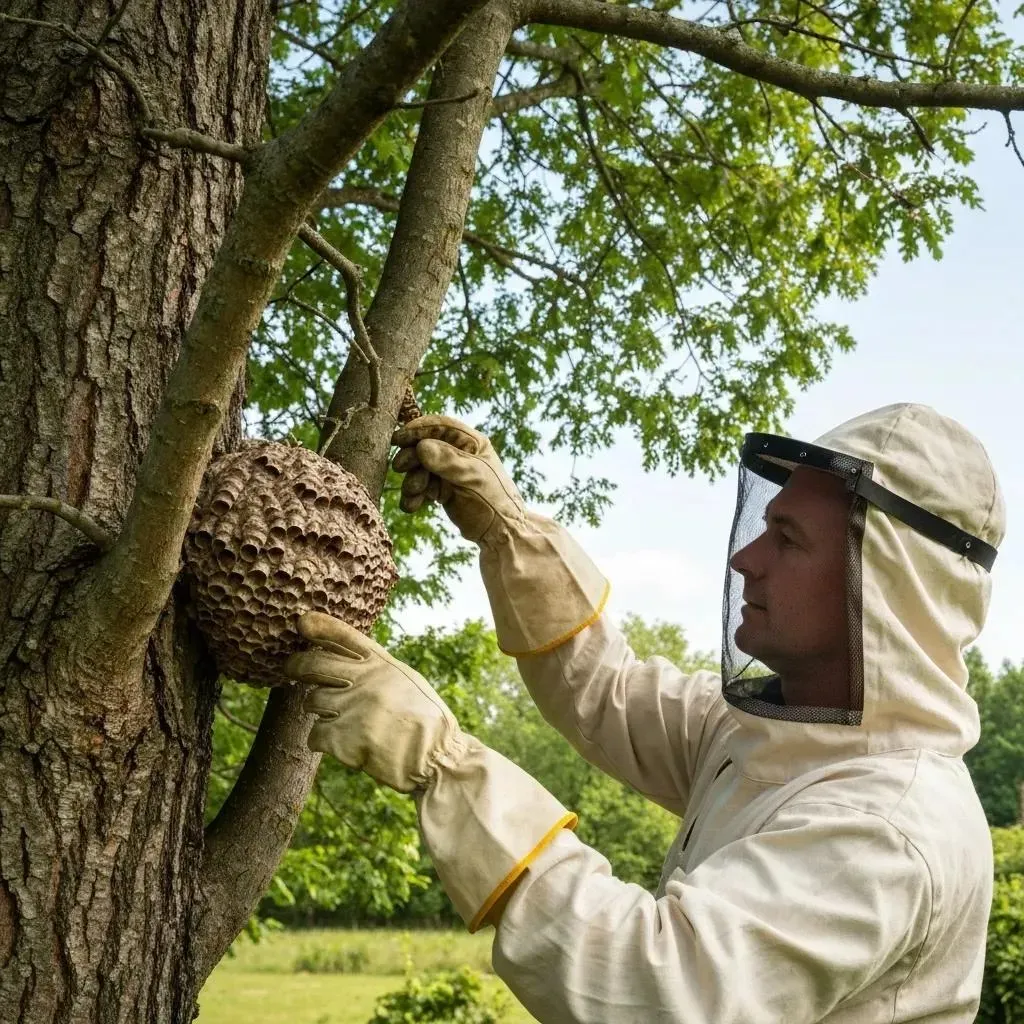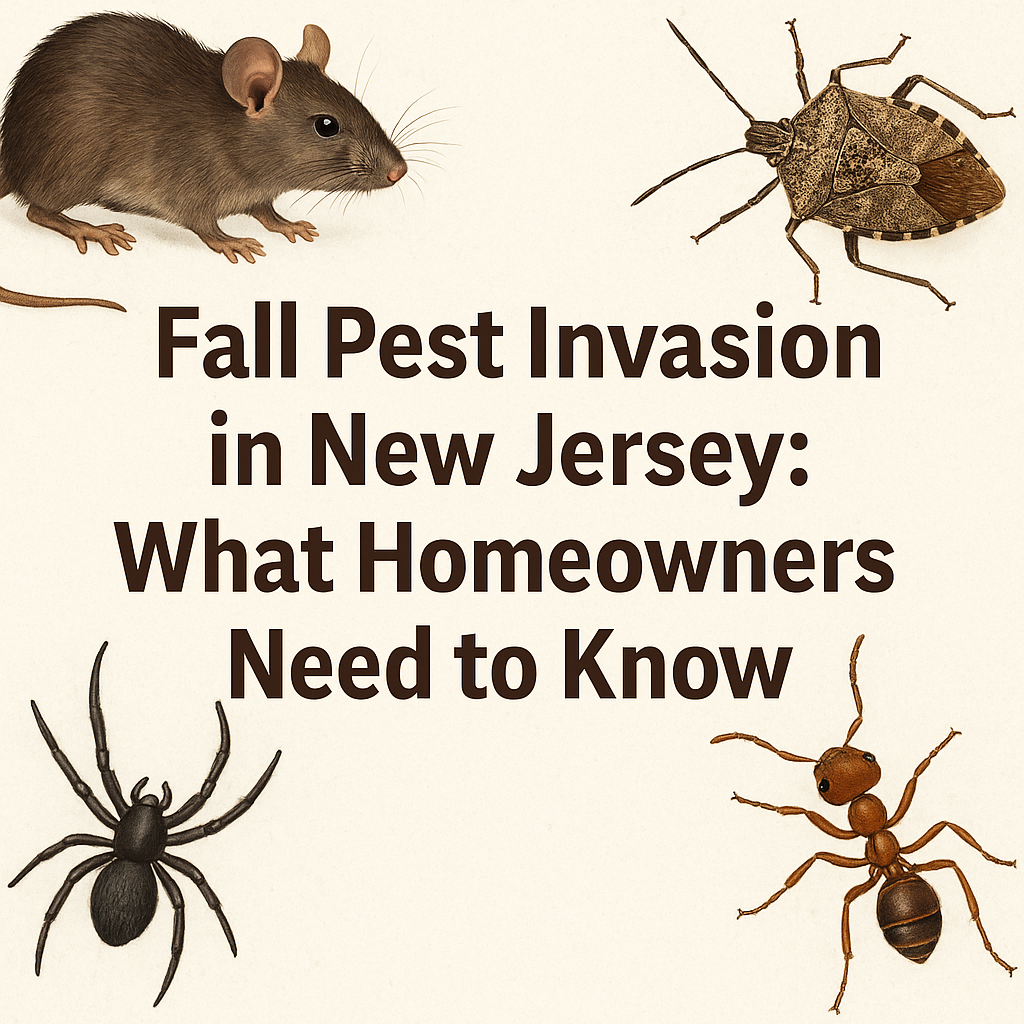How to Remove Mice From Your House: Proven Techniques for Immediate Results
Written by

An integrated pest management approach that combines sanitation, exclusion, and strategic trapping is key to both immediate and long-term mouse removal. By following the preventive measures and maintaining vigilance through regular inspections, homeowners can significantly reduce the risk of re-infestation while safeguarding their health and property. Whether through DIY methods or professional intervention, a well-informed strategy is vital for achieving a healthier, mouse-free living environment.
Removing mice from a home is a serious concern, as these pests cause structural damage and spread diseases. Homeowners need a clear strategy that identifies the
infestation source and uses
integrated pest management to eliminate mice quickly and safely. This guide covers every stage of mouse removal—from identifying an
infestation and implementing sanitation measures to trapping strategies and professional assistance. It provides step-by-step solutions combining natural, humane, and chemical controls to achieve immediate results while preserving long-term protection.
Identifying a Mouse Infestation For Swift Mice Pest Removal
Early recognition of a mouse infestation is essential. Homeowners must be alert to both subtle and obvious signs to prevent the problem from escalating.
Recognizing Telltale Signs of Mice in Your Home
Mice leave clear indicators such as small, dark,
rice-shaped droppings in
food storage areas and greasy smudge marks on walls. Frequent gnaw marks on
wood, wires, and packaging materials, along with a musty, ammonia-like
odor in confined spaces, are strong indicators. Listening for scratching sounds at night or observing fleeting shadows further confirms their presence. Recognizing these signals is the first step toward effective and timely removal.
Mice are adept at entering through gaps as small as a dime. Common entry points include spaces around doors, windows, utility conduits, and cracks in the foundation. They often nesting wall voids, attics, basements, or behind appliances. Check vents, gaps near plumbing fixtures, and holes in exterior siding. A thorough inspection of both inside and around your home helps pinpoint where mice gain entry and establish nests, which is crucial to prevent reinfestation after removal.
Understanding Mouse Behavior for Effective Removal
Mice are nocturnal and most active during early night hours, preferring warm areas with easy access to food and water such as kitchens, pantries, and utility rooms. They communicate using scent trails and ultrasonic sounds to locate food and warn others. Understanding these behavioral patterns assists homeowners in ideal trap placement and timing interventions to disrupt their breeding cycle, leading to a longer-lasting solution.
Assessing the Scale of the Mouse Problem
Assessing the
infestation involves analyzing the quantity of droppings, nesting material, and visible damage. Large infestations may require multiple measures such as widespread trapping, sealing entry points, and even professional help. Document problem areas and patterns over consecutive nights; this helps tailor your removal methods to both address current issues and prevent future incursions.
Implementing the Best Way to Remove Mice Through Sanitation and Exclusion
Eliminating available food sources and sealing entry points are key to reducing a home’s attractiveness to mice.
Eliminating Food Sources Attractive to Mice
Mice are attracted to easily accessible food. Store items in airtight containers made of metalor thick plastic, avoid leaving pet food out overnight, and maintain cleanliness during food preparation. Regular disposal of trash, cleaning up spills, and removing debris behind and under appliances minimizes feeding opportunities. Reducing food availability weakens the incentive for mice to remain.
Sealing Cracks and Openings to Prevent Mouse Entry
Physically blocking entry is a critical next step. Use
caulk, weather stripping, or
steel wool mixed with sealant to close gaps around windows, doors, pipes, vents, and other vulnerable areas—even those hidden behind appliances or in the
attic.
Steel Wool Serves as an effective, chew-resistant filler. Thorough exclusion measures help secure your home against re-entry after the
infestation is controlled.
Decluttering Your Home to Reduce Hiding Spots
Reducing clutter removes hiding and nesting opportunities for mice. Focus on areas with dense clutter such as basements, garages, and storage rooms. Dispose of unnecessary items and store essentials in sealed, labeled bins. An organized space not only disrupts current nests but also makes it easier to spot any new signs of infestation.
Maintaining Yard and Exterior to Deter Mice
Exclusion is not limited to indoors. Mice often nest in overgrown gardens, under shrubbery, or among debris outside. Regularly trim vegetation, remove clutter, and keep the yard clean. Ensure that wood piles and compost bins are kept away from the house. A tidy exterior lessens food and shelter options for mice, complementing your overall control strategy.
Effective Trapping Strategies for How to Remove Mice From Your House
Trapping is a cornerstone of immediate mouse removal. Selecting the right traps and placing them effectively is crucial to success.
Selecting the Right Types of Mouse Traps
Several trap types are available:
Snap traps: These provide quick, humane immobilization when set properly.
Electronic traps: They administer a fatal shock and are reusable.
Glue traps: While effective, they are less humane and may capture non-target wildlife.
Live traps:These offer a humane alternative; however, captured mice must be released far away to avoid reentry.
Choosing the appropriate trap depends on the
infestation size, your ethical considerations, and cost.
Proper Baiting Techniques for Mouse Traps
Traps work best when baited correctly. Mice are attracted to high-protein and aromatic foods like peanut butter, chocolate, and seeds. A modest dollop of peanut butter is sufficient due to its strong scent and sticky texture, which ensures the mouse stays on the trap long enough to trigger it. Regularly check and re-bait traps to maintain their effectiveness.
Strategic Placement of Traps for Maximum Impact
Place traps in high-traffic areas along walls, corners, baseboards, or near suspected entry points. In multi-story homes, focus on areas with visible signs like droppings or gnaw marks. Using multiple traps in a grid pattern can enhance the chances of capturing mice by intercepting their common paths.
Safely Handling and Disposing of Trapped Mice
Once a trap has worked, proper handling is vital. Always wear gloves when handling traps to avoid pathogen exposure. Dead mice should be disposed of in sealed
plastic bags, and traps must be cleaned with
disinfectant before reuse. For live traps, release captured mice at least one mile away from your property to minimize return risks. Recording the number of captures helps gauge
infestation severity and adjust your approach.
Monitoring and Adjusting Your Trapping Approach
Consistent monitoring is key. Check traps daily and note capture patterns to refine placement or bait types. Adjust your strategy if you observe areas with higher bait consumption or droppings. Continuous tweaks based on observed results are central to effective control. How to Remove Mice From Your House: Proven Techniques for Immediate Results reducing and eventually eradicating the mouse population.
Considering Baits and Rodenticides for Mice Pest Removal
When trapping alone is insufficient, baits and rodenticides offer a chemical-based method to reduce mouse populations—but they must be used with caution.
Understanding Different Types of Mouse Baits
Mouse baits come in two main types: -
Food-grade baits:Designed to lure mice without immediate death, used in tandem with traps. -
Rodenticidal baits:Contain toxins such as anticoagulants that gradually lead to death. Different products act over varying periods, so understanding their mode of action is important to ensure effective use.
Safe Use of Rodenticides to Avoid Harming Pets and Children
Rodenticides are powerful and can be dangerous to pets and children. Place bait stations in areas inaccessible to non-target animals, and always follow manufacturer instructions for dosage and placement. Keep detailed records of usage and inspect stations regularly for safety. Educate all household members about the location of these bait stations to prevent accidental poisoning.
Placement and Monitoring of Bait Stations
Strategically position
bait stations near mouse pathways, entry points, or along common routes. Secure them to prevent displacement and keep them out of reach from curious pets or children. Frequent monitoring ensures that
baits are not depleted and that stations remain intact, allowing for timely replenishment and adjustments as needed.
Recognizing Risks Associated With Poison Baits
Use poison baits with clear awareness of their risks. Secondary poisoning can occur when predators or pets consume poisoned mice. Additionally, mice may develop bait shyness, reducing uptake over time. Environmental contamination is a risk if baits are not handled properly. A balanced approach that minimizes reliance on chemicals while integrating other control methods is often preferred.
Natural and Humane Methods for Removing Mice
For those avoiding chemical solutions, natural and humane methods effectively repel or capture mice with minimal ecological impact.
Employing Natural Mouse Repellents Effectively
Natural repellents exploit mice’s sensitive sense of smell. Essential oils like
peppermint, eucalyptus, and citronella are effective when applied as a diluted spray along entry points and baseboards. Dried herbs or sachets containing these repellents can be placed in cabinets and pantries. These methods are safe for families with pets and children and work best when combined with proper sealing of entry points.
Using Live Traps for Humane Mice Pest Removal
Live traps capture mice without harming them. Once caught, promptly release the mice at a substantial distance from your home. Regular monitoring and careful handling are key to using live traps successfully, making them a preferred ethical choice for those concerned with animal welfare.
Creating a Less Attractive Environment for Mice Naturally
Reducing food sources, clutter, and standing water naturally deters mice. Ensure that
food storageareas are clean and sealed, remove excess
debris, and keep outdoor areas free of overgrown vegetation. This prevention method reduces both the attractiveness and available shelter for mice, supporting long-term control.
Understanding the Effectiveness of Ultrasonic Repellers
Ultrasonic repellers emit high-frequency sounds that may disturb mice and drive them away. Their effectiveness can vary with room layouts and environmental factors; therefore, using them in combination with sealing entry points and regular sanitation is advisable. Monitoring their effectiveness will help determine if additional measures are needed.
Preventing Future Infestations and Knowing When to Call Professional Mice Pest Removal Services
Long-term control of mice requires preventive practices and, sometimes, professional expertise.
Long-Term Strategies for Keeping Your House Mouse-Free
Maintain a routine of regular cleaning,
inspection, and prompt repair of any new cracks or gaps. Keep both indoor spaces and the yard tidy, minimize ground cover near your home, and ensure proper disposal of
waste. Such ongoing maintenance reduces the factors that attract mice and prevents future infestations.
Regular Inspections to Catch Early Signs of Mice
Schedule monthly or quarterly inspections of basements, attics, and behind appliances to quickly identify signs of mouse activity, like new droppings or gnaw marks. Early detection allows for rapid intervention, preventing a minor issue from developing into a full-blown infestation.
Identifying Situations Requiring Professional Help
DIY methods can address many infestations; however, situations with large or persistent populations, widespread damage, or ongoing health risks merit professional intervention. Experts bring advanced tools and systematic approaches that can effectively seal entry points and eliminate residual activity.
What to Expect From a Professional Mice Exterminator
A professional service will conduct a thorough
inspection, identify all entry points, and devise an integrated treatment plan that may include advanced traps, baits, and exclusion strategies. Follow-up visits are often part of the service to ensure that the
infestation does not recur.
Maintaining a Mouse-Proof Home After Removal
Even after successful removal, the challenge lies in maintaining a mouse-free environment. Continue preventive practices—regular cleaning, sealing new cracks, using natural repellents, and scheduling occasional professional inspections—to ensure long-term protection.
Have a Mouse Issue?
Our NJ pest control experts will make sure your home is free of mice.
Get Quick, Efficient Pest Control & Exterminating
When pests invade your home, waiting isn't an option. At Resolve Pest Management, we understand how urgent these situations can be. That’s why we offer 24-hour emergency pest control services to residents in Lacey, NJ and Bayville, NJ. Whether it’s rodents, insects, or wildlife, our expert team is available day or night to protect your home and restore your peace of mind.
Our treatments are family and pet-friendly, ensuring that your loved ones—including the furry ones—are safe during and after service. We know your time is valuable, which is why we provide rapid scheduling, getting you the help you need, right when you need it.
If you're dealing with a pest emergency, don’t wait! Contact Resolve Pest Management today for immediate assistance. We're here to help make your home pest-free and comfortable again.
24-Hour Emergency Pest Control
We know pests can strike at any time- day or night. Resolve Pest Management is here to help 24 hours a day.

Family & Pet-Friendly Treatments
Protecting loved ones- furry or not is our #1 priority. We use pet-friendly treatments to give peace of mind.

Testimonials
"Resolve Pest Management is absolutely wonderful. Carlos and his team do thorough work and will put your mind at ease. They explain everything that needs to be done or what they suggest should be done. When we first called, Carlos showed up and checked every area of the house. Not only did he handle the mouse issue, he also found termite damage that was unknown to us. Since then, we have regular maintenance and have even called them other issues like bees. The receptionist is also very professional and kind, working with our availability. My family and I highly recommend Resolve Pest Management."
Tonianne D.
Barnegat Township NJ
Get on Schedule Today







